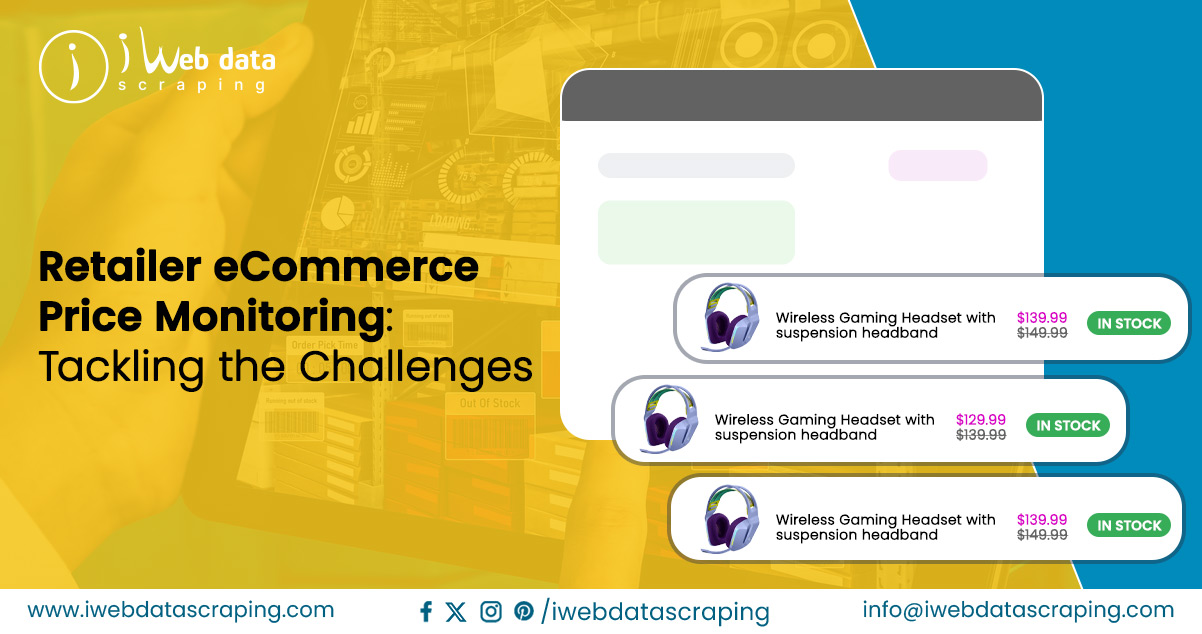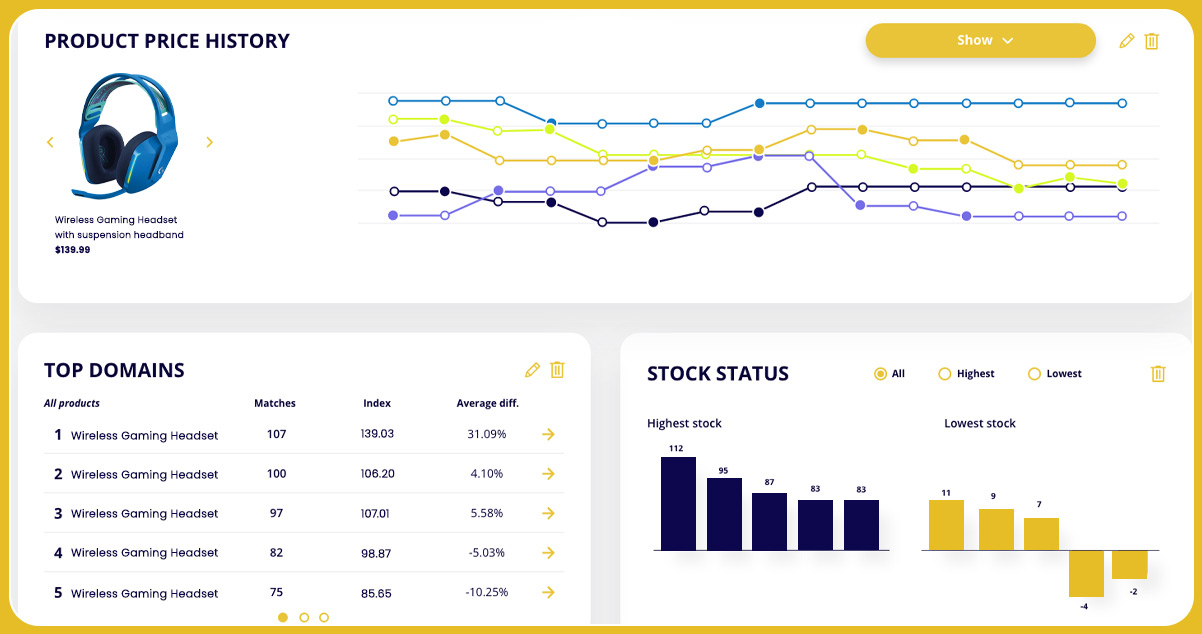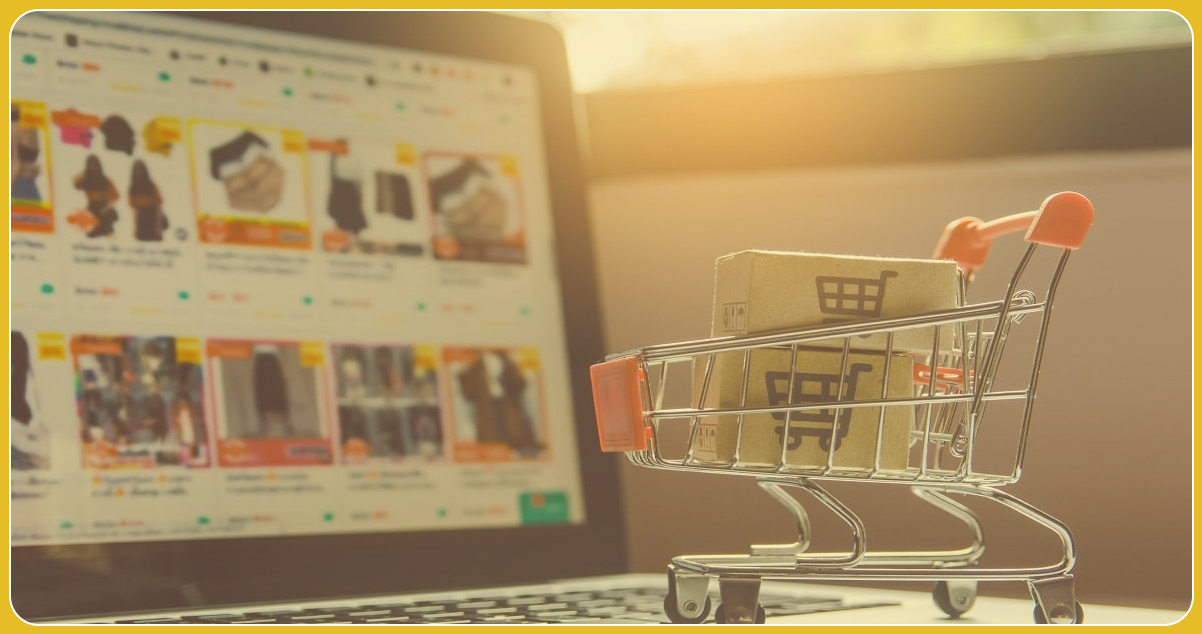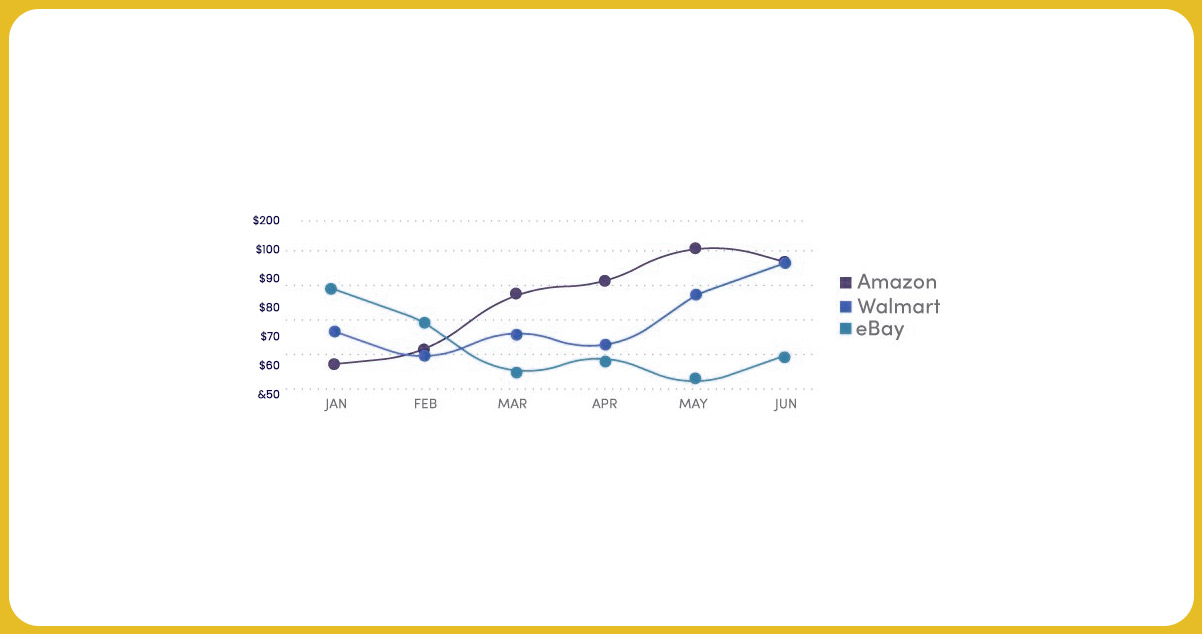
The e-commerce industry is experiencing unprecedented growth, with the latest research indicating that e-commerce sales in 2023 exceed 20% of the global retail market. These numbers will increase substantially shortly. With the market expanding, competition among retailers is intensifying, prompting more and more businesses to search for practical solutions to enhance their growth and gain a competitive edge. Fortunately, the solution is readily available – competitor price monitoring.

E-commerce Price Monitoring is of paramount importance for several reasons. In today's highly commoditized landscape, where new products flood the market daily and many diverse products are available online, it becomes increasingly more work to differentiate your products and brand among the vast sea of competitors. The prevalence of copycat products on online marketplaces further compounds this challenge, making it imperative to employ e-commerce price monitoring. Hence, scraping e-commerce product data proves helpful in such instances.
Competing on tangible factors such as price becomes necessary to capture customers' attention. Only by establishing a competitive pricing strategy can you begin to set yourself apart from the competition and eventually highlight your strengths in intangibles like product quality and exceptional customer service.
In online retail, particularly within platforms like Amazon, pricing, or more specifically, maintaining a competitive price, is critical for success. While this is no industry secret, achieving and sustaining a competitive price using e-commerce data scraping services in a highly dynamic environment, where countless merchants vie for the same goal, is a formidable challenge.
The initial step toward achieving competitiveness is consistently monitoring prices within the marketplace. However, this task takes time, as pricing data quickly becomes outdated. Merchants frequently adjust their pricing strategies to stay competitive with the help of e-commerce scraper. Success hinges on staying one step ahead or at least keeping pace with these changes.
Retailer ecommerce price monitoring is an indispensable tool in your arsenal, essential for survival and thriving in the online retail business. It automates regularly checking the prices of your products or similar products. This monitoring must occur at a high frequency—daily, hourly, or weekly—and should deliver the data in a format that seamlessly integrates with your systems.

It's not a secret that consumers are seeking the lowest prices most of the time. There are two reasons behind that. First, buyers like to be economical and avoid overpaying for goods when they can have them cheaper. Secondly, it is straightforward for consumers to check the lowest price using various price monitoring websites.
Therefore, retailers must ensure their essential products are visible on price comparison websites and marketplaces. It is only possible by monitoring the market and competitors' moves since more and more of them have decided to use Price Intelligence software and can change their offers a few times daily.
Moreover, nowadays, retailers should know that even a few cents of difference can make a deal. That is why it's so important to keep on track with market changes that may occur regarding e-commerce.
Amazon has demonstrated its colossal stature in the e-commerce industry. After years of remarkable success, it has unveiled a winning formula comprising three pivotal elements for online commerce triumph:
Price
Convenience
Brand
Amazon recognized the paramount importance of these factors to consumers. They were already proficient in offering competitive pricing, and with the introduction of the Prime shipping program, they revolutionized the convenience aspect. Moreover, Amazon's extensive array of top brands further fortified its position.
This triad of factors has catapulted Amazon into a dominant force within the e-commerce landscape. In their marketplace, traditional retailers and third-party sellers compete fiercely to maintain competitive pricing. Additionally, they charge these sellers for leveraging the convenience of their Prime shipping and Fulfilled by Amazon (FBA) programs. Amazon ingeniously harnesses brands' advertising and inherent value to entice customers to make repeated purchases, cementing its unrivaled position.

In the brick-and-mortar realm, retail was a localized affair rather than a global one. Traditional retailers and merchants would establish their prices by considering their costs and applying a margin or markup. Prices remained relatively static, mainly because it was a cumbersome process to make constant adjustments, and, more significantly, there was little incentive to alter pricing strategies frequently. Competition was confined to the local sphere, making it challenging for customers to compare prices, as they had to traverse from one merchant to another to assess prices physically.

The emergence of the Internet has brought about a profound transformation in the retail landscape. Retailers and customers are no longer bound to localized markets. The Internet has liberated customers from the constraints of physical stores, enabling them to explore a global array of retailers within minutes or even seconds, compare prices, and receive their purchases within days or even hours. The ease of international shipping and global trade dynamics have linked sellers worldwide with a vast global customer base.

Retailer eCommerce price monitoring presents formidable challenges in the highly competitive digital marketplace. One of the foremost difficulties lies in the ever-changing nature of online pricing, where factors like demand fluctuations, competitor actions, and market trends can lead to rapid price shifts. Accuracy of the data collected from various sources is another critical challenge, as slight inaccuracies can result in misguided pricing decisions. Moreover, retailers often contend with the scale and volume of products they offer, making it a complex task to monitor and adjust prices across a vast catalog. Gaining competitive intelligence, understanding competitors' pricing strategies, and staying ahead in a crowded market necessitate constant analysis and adaptability.
Also, managing pricing across different online marketplaces with distinct rules and dynamics adds complexity. Retailers must also navigate legal and ethical concerns, ensuring their price-monitoring strategies comply with antitrust and data privacy regulations. Successfully addressing these challenges requires combining advanced technology, data analysis, and a deep understanding of the ever-evolving eCommerce landscape to maintain competitiveness and ethical business practices.
Overcoming the challenges faced by retailer eCommerce price monitoring requires a combination of strategies, tools, and best practices. Here are some ways to address these challenges effectively:
For further details, contact iWeb Data Scraping now! You can also reach us for all your web scraping service and mobile app data scraping needs.